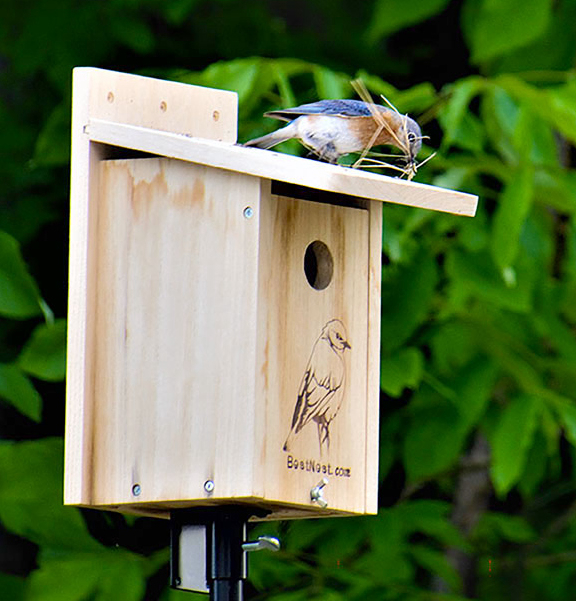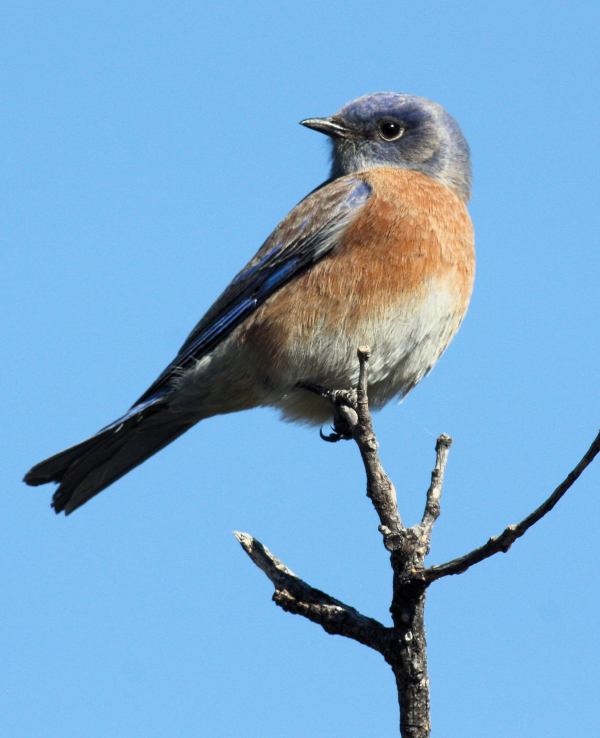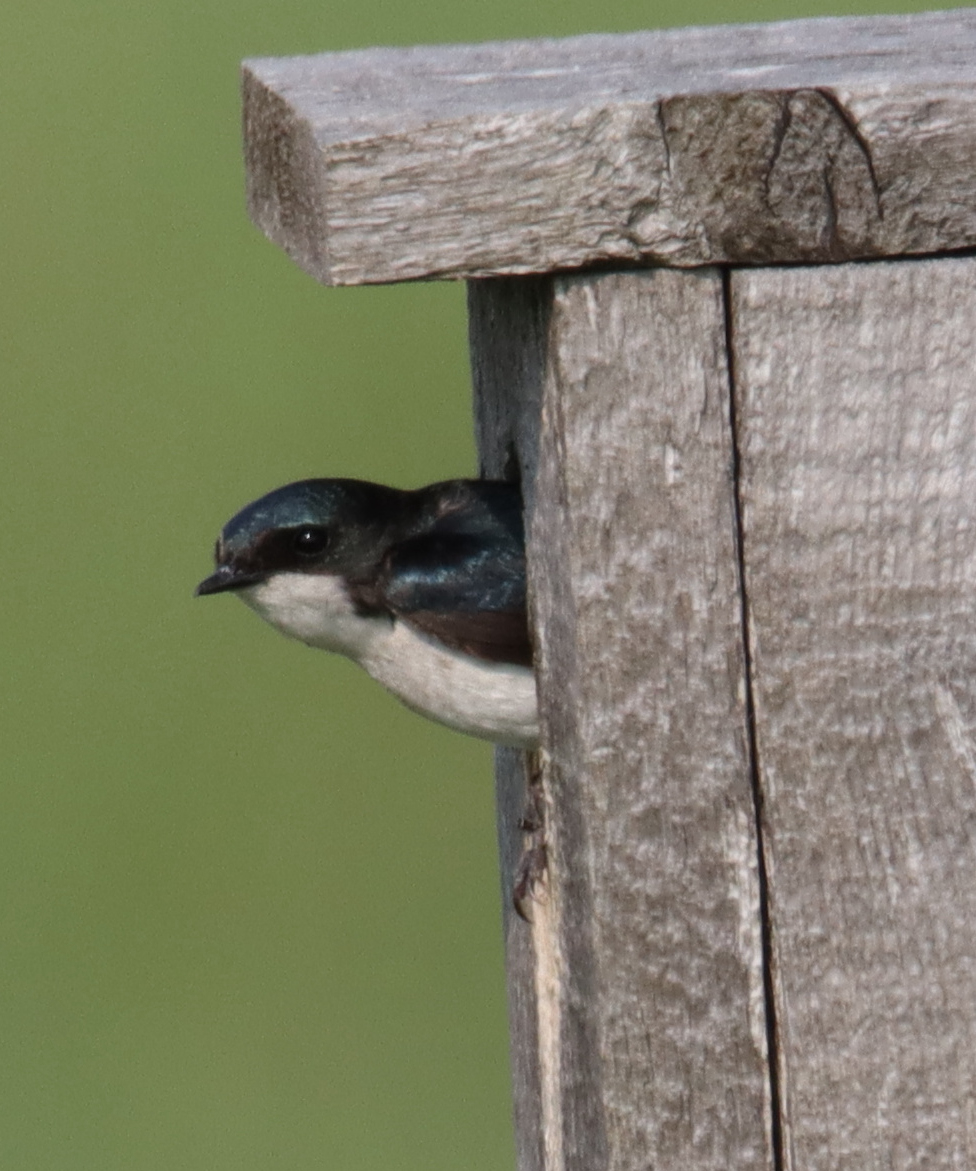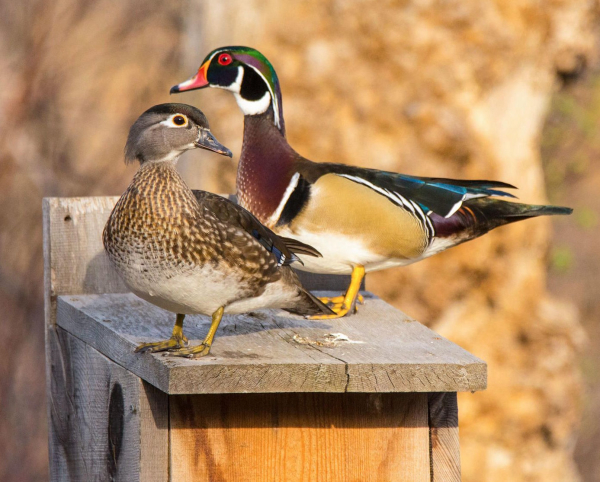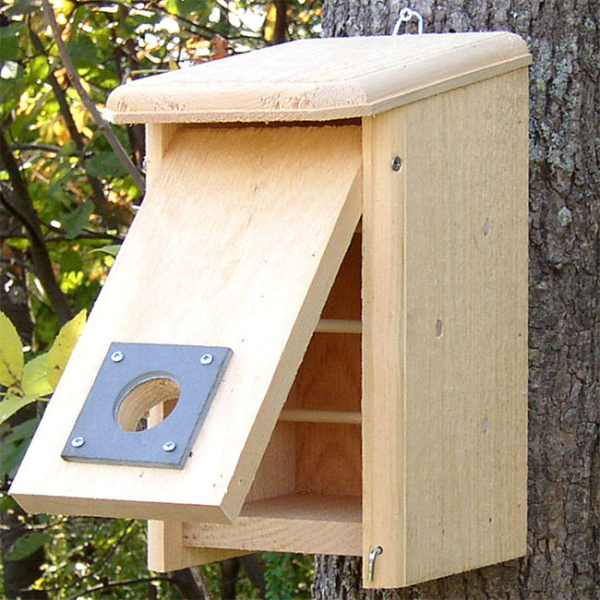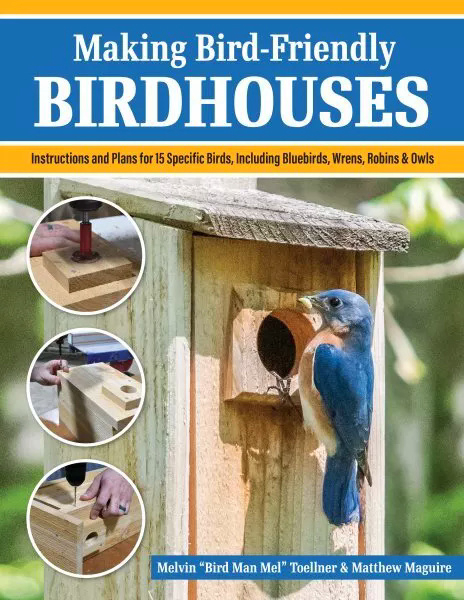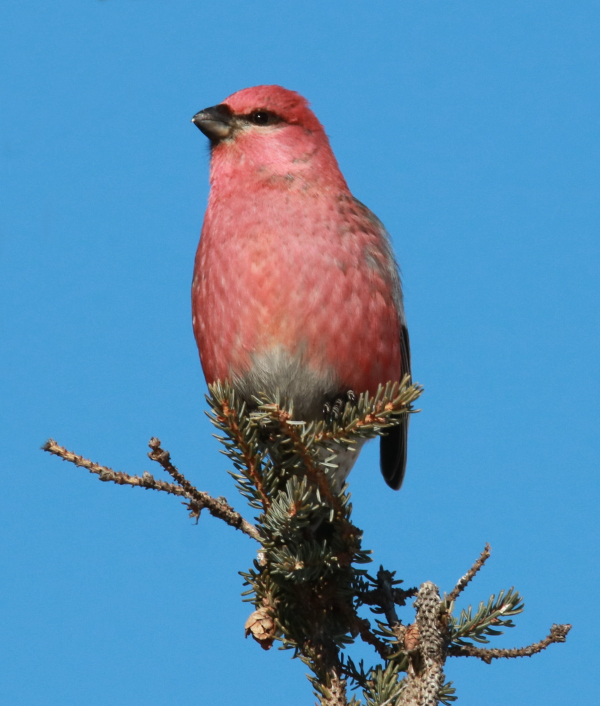A Nesting Shelf for Robins, Doves, & More
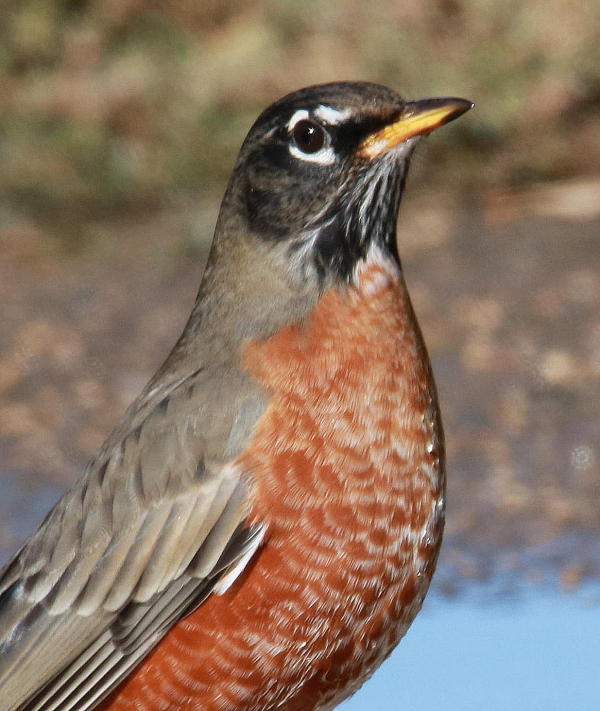

Not every bird nests in a birdhouse or nest box; actually, just a small percentage of birds are specialized cavity nesting birds, but some birds will build their nest on the edge or corner of buildings where they can fit a nest that offers a degree of protection and stability. The most obvious among these birds are robins, doves, phoebes, and House Finches. To attract these species, or to redirect them to a certain location, some years ago a creative birder tried building a simple shelf that proved successful, and over the years the design has been improved.
Today, a nesting shelf tends to be something of an open-ended box, but the best ones tend to be a little more open, with partly open sides so the birds can see more of the surrounding area. They have a slanted roof with a bit of an overhang, a drain hole drilled in each corner of the floor, and many nesting shelves have a low “curb” on the front.
You can install the nesting shelf on the side of a building or under an eve, especially in a position where you have a good view of it. But you can also install it on the top of a post that has a predator guard below the shelf – just as you would with a nest box. Providing a safe place to nest is even more important than providing a nest shelf in the first place.
Dual Purposes
Providing a nesting shelf is definitely a plus for the birds that will use it, which includes some of our favorite birds in the form of American Robins, Mourning Doves, House Finches, and insect-eating Eastern Phoebes. Providing a nesting shelf adds a level of improved chances of nesting success for the birds that use them – one small effort by birders that adds up to another level of a conservation effort on behalf of our native migrants.
You can also use a nesting shelf to re-direct some birds to a location where you would prefer them to locate their nest. For example, Barn Swallows can leave a mess as they build their mud-packed nest, on the side of a building or under the eve of a porch or deck; below the nest, unsightly mud splotches and feces will accumulate. However, by positioning a nesting shelf in a convenient location where you can enjoy the nesting activities of the birds, hopefully you the birds will re-direct their nesting activities to a shelf at a location of your choice.
By the way, if you do wish to attract Barn Swallows, a beneficial species that eats an abundance of flying insects during their nesting cycle, they need a source of mud nearby, which is an integral material for them to build their nest. Actually, robins and phoebes use mud to concrete their nesting materials together too, but usually spring rains provide ample mud. But, to facilitate their need for mud, if there isn’t a rainwater puddle nearby, you can make a mud puddle by pouring a couple gallons of water on exposed dirt in an open area, or add water periodically with a garden hose.
One other biological point is that species that use nesting shelves tend to renest after their first nesting attempt, hopefully after the nestlings have fledged successfully. That’s when you should remove the previous nest to make the nesting shelf available for their second or even third nesting cycle. For species that build nests, nest building is an important part of the behavioral and physiological cycles that preclude egg development, but only rarely will the birds build on top of or beside a previous nest. So don’t hesitate to remove the nest after nestlings have fledged, and you may get to experience another nesting cycle, possibly by the same adult pair.
DIY or Buy
You can build your own nesting shelf, or buy one ready-made. If you are a do-it-yourselfer, you can get Free plans to build a nesting shelf for robins, phoebes, or Barn Swallows at NestWatch | All About Birdhouses – NestWatch (scroll down the webpage to the list of birds). Making a nesting shelf is really very easy, and it’s something you can do with children or on your own.
If you’re not a backyard builder, it’s even easier to buy a nesting shelf, and the best one we’ve seen is available from Duncraft, which has really increased the variety and quality of birdhouses and other nesting structures they are offering this year; see Duncraft.com: Duncraft 3017 Best Nesting Shelf
Finally, when we attract birds to our yards, we need to be especially careful not to use pesticides and fertilizers that may affect the birds we wish to benefit, or the insects and earthworms the birds eat and feed their nestlings. Environmental health is all interconnected, and by making areas better for birds, we simultaneously make them better for our yards and our families. Best wishes as we enter this spring’s nesting season; let’s all make it a season to remember!
Share your backyard birding experiences and photos with The Birding Wire at editorstbw2@gmail.com

